22 May An Exploration of the Midwest Energy-Tech Startup Landscape
We’re ready to dig deeper to learn more about energy innovation and startups in the Midwest at Zpryme’s ETS@chicago event. To get the conversation started the most basic questions to address are: Why the Midwest? Why now? To begin answering these questions, we talked with two organizations—a venture capital fund, Energy Foundry, and a startup company, Root3 Technologies, Inc.—to learn about what factors are making the Midwest ripe for energy innovation and a great place for energy-tech startups to grow.
Funding and Innovation in the Midwest
A key piece for Midwest energy innovation is the funding and support network coming together to help companies grow. Several key funding efforts and organizations have come about over the past several years. The Midwest received more than $1.2 billion from the U.S. Department of Energy through the American Recovery and Reinvestment Act of 2009—compared to $0.42 billion for California and $0.44 billion for New England. Billions more have been invested by ComEd and Ameren for energy efficiency, green energy and improving existing grid infrastructure with the passage of The Illinois Energy Infrastructure Modernization Act (EIMA) in 2011, which enabled the utilities to increase rates.
Along with the funding opportunities of EIMA came Energy Foundry. This organization brings together funding opportunities for startups with a set of resources and expertise to accelerate the innovation for the most promising energy ideas. Another example of organizations cultivating innovation includes the Smart Grid Cluster, which is supported by the U.S. Small Business Administration, and provides business, technical and funding support to startups. The number of startups working with the Smart Grid Cluster has grown from 50 startups in 2012 to 450 startups in 2014.
The Midwest Isn’t Afraid to Build Things
This thriving Midwest investment and startup culture places the region in a sweet spot for the demands of the Internet of Things, Smart Grids and Smart Cities—which requires not just data, apps and communications, but tangible technologies. “We’re at this nexus in time where the convergence of the Internet and physical things is coming closer, and closer and closer together—and the electrical grid is the largest physical structure out there,” said Jeremy Adelman, vice president, Energy Foundry. “We have a core competency in the Midwest in manufacturing and energy, and we’re not afraid to build things. It’s that kind of expertise that is going to solve how to best add energy storage and IT to all of these physical assets—and that is what’s going to transform energy to meet our future needs and demands on a global scale.”
There are Large Companies to Fuel Development
Along with a significant manufacturing base comes significant companies—from the global reach and innovation of a business like S&C Electric to a world-class research institution like Argonne National Laboratory. This ecosystem not only brings a comfort with manufacturing and innovation, but also well-funded companies that are willing to invest in growing startups.
“A lot of our capital came from the Midwest,” said Archie Gupta, co-founder of Root3, a startup company that delivers real-time analysis for energy management in commercial and industrial operations. “A lot of companies move to [Silicon] Valley for funding, and if we did have that issue, we would have moved there in a heartbeat. Support from institutions and businesses is what is great about the Midwest. I wanted to stay and build the company; it made sense for me to stay in the Midwest.”
The University of Chicago opened up its facilities for Root3 to deploy the company’s energy management solutions and do further product development. Root3 also received a contract from ComEd to look at whole-system efficiency—from boilers to chillers. ComEd also had strong connections with large commercial and industrial customers that then became Root3 clients.
The balance between startups and large companies is important. “Startups play a critical role where large companies either can’t address or move fast enough to develop new solutions and technologies,” said Adelman. “At the same time, startups also benefit from large companies that can help them go to market and scale their products.”
There are Ways to Connect the Little Guys with the Big Guys
The idea of these partnerships is great, but many large companies often talk to us about being bombarded and overwhelmed by startups and inventors promising to have the next big thing. That’s where Energy Foundry fills a unique space in Illinois as it helps large companies and funders to essentially vet startups for their viability, as well as build stronger connections within the region. “Energy Foundry has built a pretty good community—a strong and tight-knit group—that’s willing to experiment and help build new technologies and companies,” said Gupta.
At the same time, it is critical to have groups to build strong connections among, which is a strength for the Midwest. “I’ve seen in my travel across the U.S. a lot of incubators, but then where do those startups go from there, if there aren’t large companies or funders in the area?” noted Adelman.
Digging Deeper Into the Midwest
The groundwork for energy innovation in the Midwest is a careful blend of startups, large companies and other support organizations coming together—and Zpryme will devote the next couple of months to dig deeper into this ecosystem and understand what makes the Midwest tick. Zpryme—along with our partners—will be crafting articles in the weeks leading up to ETS@chicago, as well as three reports that will draw upon examples from the Midwest:
- Infrastructure, Revisited: New Technologies, New Business Models, and New Investors | This report discusses the changing world of energy, water, transportation and communications infrastructure.
- Modeling and Simulation for Advanced Infrastructure | This report discusses the roles of modeling and simulation in building more advanced infrastructure and better understanding consumer behaviors.
- The Midwest Energy Innovation Ecosystem | This reports covers what makes up innovation ecosystems and communities, as well as looks at the Midwest specifically and documents its innovation efforts for energy.


